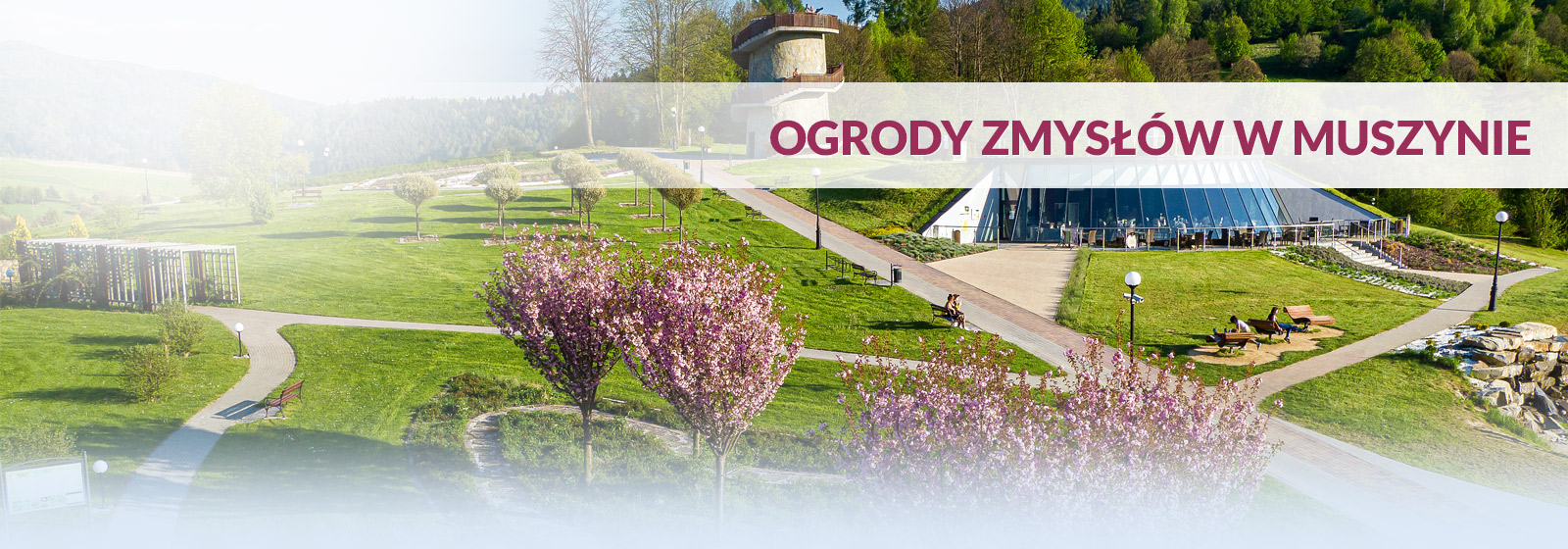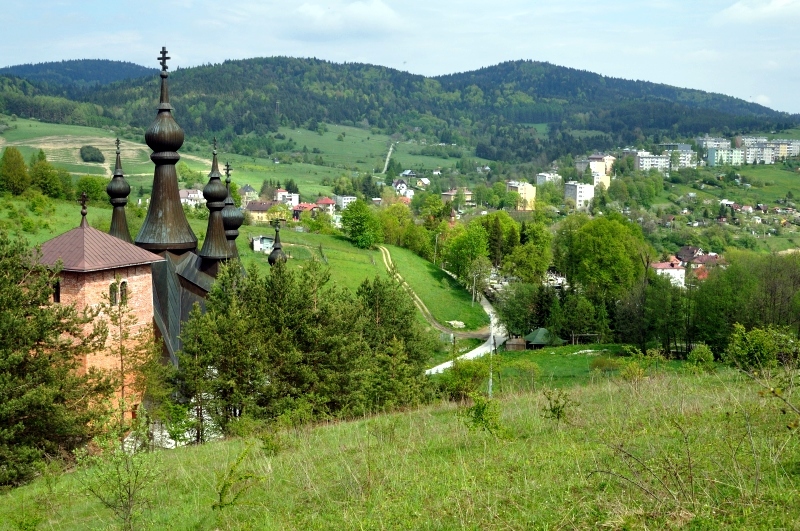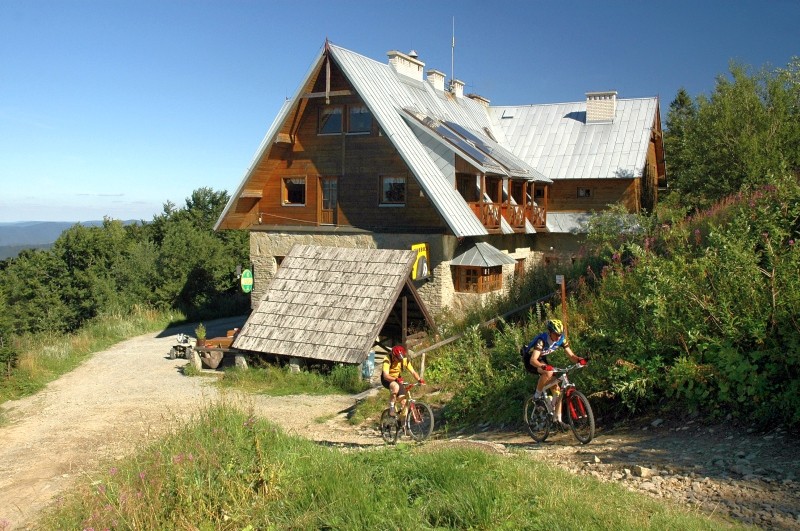Lower Krynica is the southern district of the town, which lies in a valley of Kryniczanka. A large part of it was a separate town formerly known as Krynica-Wieś. According to folk tradition, at the turn of 16th and 17th century the first settler here was a man called Homa, which is why the place was called ‘Homowe Sioło’. In 1651 the Greek Catholic parish was established here, as most residents were Łemkos. In addition to agriculture and pasturing, they were also cloth makers. In 1911 a separate rural municipality was constituted here, although the inhabitants remained strongly associated with the main resort. They sold there their farm products and forestry and worked at the resort as a carriage drivers (at that time, there was no rail link between Muszyna and Krynica). In the interwar period, Lower Krynica had its own mill, two sawmills, a fulling mill, two brickyards and a slaughterhouse. Ruska Włościańska Party and the Lemko Society (the latter publishing its own weekly magazine “Łemko" were ‘born’ here. The main publisher of “Lemko” weekly, Metody Trochanowski, worked out a Lemko primer. All these activities slowly formed the identity of the Lemko Ruthenian as a separate nation (and not, as some people believe, an ethnic sub-group of Ukrainians or Russians). During the Second World War, Lemko activists were subjected to repression, sometimes even deported to concentration camps. Many of them cooperated with Polish underground organizations, helping to organize courier routs to Hungary. On January 21st 1945 the Red Army entered Krynica. The frightened Lemko population consented to a voluntary deportation to the Soviet Union. Those remaining were expelled to the western Polish territories during the "Operation Wisla" in 1947. On December 28th 1946, the Greek Catholic parish was changed to a Roman Catholic. In the late 1950s, some of previously deported Lemko families returned to Lower Krynica. This population amounts today to ca. 400 people. In the recent years, this part of Krynica expanded greatly, losing entirely its rural character.
Church of Our Lady of Perpetual Help. Formerly a Greek Catholic Church of the Epiphany, the church is located at Kraszewski Street below the mouth of the Czarny Potok stream. It was built between 1865-1875 in the place of the old wooden church from 16th century. In the period 1959-1962 it was renovated and modernized. The orthodox church is topped with saddle roofs with a large tower and seven smaller turrets with onion domes. From the old interior wall decorations only the upper part of the iconostasis and four wooden side altars were preserved. Since 1987 a mass service in the Eastern rite is again celebrated. The inscription on the notice board in the church reads: "Currently, according to the old tradition, in the spirit of mutual tolerance and respect, the House of God in Krynica rejoices in the glory of God from both confessions, the Greek Catholic and the Roman Catholic, while retaining their liturgical differences. " Besides the church, there is a large Lemko cemetery with several scattered stone crosses (the oldest from the early 20th century).
Old Cemetery is located at the street of the same name. Many people of particular merit for the town are buried here, including Leon Nowotarski (the long-time director of the spa), Roman Nitribitt, Fr. Cc. Adam Cisowski (the builder of St. Anthony Church), dr. Mieczyslaw Dukiet, the poet Henry Zbierzchowski, and Epifan Drowniak, known as Nikifor (his burial place being an often visited place in the recent years). In front of the cemetery chapel, a stone monument with the inscription "Victims of Nazism and Communism," and behind the chapel there is a burial place of the First World War soldiers.
Orthodox Church of Prince Vladimir Equal to the Apostles built in the years 1983-1996 from brick is an example of the eastern Slavic church architecture. Another example can be found only in the village Klimkówka near Gorlice. Inside there is an iconostasis and several icons. In the vestibule there is a historic painting depicting the Last Judgment, the Crucifixion scene carved in wood (probably from the upper part of the church iconostasis) and a plate informing that the church is a tribute to the Lemkos devotion to the Orthodox Church, the faith of their fathers. Church services on Sundays and Holidays at 10:00.
The Czarny Potok Valley flows west of the Kraszewski Street (behind the hospital building to the right). It owes its name to the mountain stream rushing along the road going in the north-west direction. After 3.5 km you can turn to the Ludowa Street, where the recreation center of the Agricultural University of Cracow and the seat of the Forest Experimental Station headquarters are located. The latter serves as a Forest District Office and the educational and training center of the Faculty of Forestry of the Agricultural University in Krakow. Further up the Czarny Potok stream is the campsite and the lower station of the gondola cable car to Jaworzyna Krynicka, which is the greatest attraction of the area. Opened on August 21st 1997, it is 2,284 m long, has 56 cars and the transfer capacity of 1,600 people per hour, and until 2007 carried over 7 million passengers to the Jaworzyna Krynicka summit. The cable car has now become a hallmark of the Krynica resort. In the winter season (December to March) a number of ski runs of various difficulty level are at their disposal of the skiers, and in recent years a ski lift was built on the so-called ‘Izwor’. In the future, the lower station in the town center is planned. At the end of Czarny Potok stand two large hotels ("Pegasus" and "SPA Dr Irena Eris") with a spacious parking lot.
Jaworzyna Krynicka (1114 m.a.s.l.) is the highest peak in the east part of Beskid Sadecki. Two touristic routes meet at the top of the mountain: the green route (from the center of Krynica through the Kryżowa Pass to Szczawnik) and the red route (going from the main seat of The Mountain Rescue Service in the center of Krynica by the camping site, through the ‘Runek’ peak and the ‘Hala Łabowska’ in the direction of the town Rytro). There is a beautiful view from the Jaworzyna Peak on the Tatra Mountains (ca. 50 km away), the Lackowa Peak of the Low Beskid Range, the Turbacz Peak by Gorce, the Mogielica Peak in the Island Beskids and the Little Pieniny Range. On the northern slope of Jaworzyna, 10 minutes walk from the top a PTTK Shelter is located. Built in 1937 on the initiative of the Polish Tatra Society, it housed 70 beds, a stylish dining room and small museum of nature. In its record books personalities such as the Dutch Queen Juliana with her spouse, the famous Polsih singer Jan Kiepura or a dedicated tourism activist Mieczyslaw Orłowicz. Unfortunately, in 1943 the shelter was burned by the Nazis. After the war a new, smaller one (named 'Sarenka') was opened. However, it did not survive to the present day. The now operating shelter built in 1966 is a mountain hotel with 34 beds. Near the hostel there is a small stylish building of the Mountain Rescue Duty-room and the Mountain Touristic Culture Center of PTTK opened in 1970, housing a museum exhibition on the history of tourism in Sadecki Beskid Range. Separate display cases are devoted to the work of tourism activists Kazimierz Sosnowski, Valery Goetel and Zygmunt Hetper. The second room with a nice scale model of the surrounding mountain ranges houses temporal seasonal nature exhibitions. On the large square in front of the building a New Year's Eve 'Mass of the Mountain People' is festively celebrated each year. The easiest access to the shelter is by a beaten road marked as a cycling route (comfortable even in bad weather conditions). The altitude difference is ca. 500 m, the walk down is ca. 1.5 hour, the walk up takes about 2.5 hours.






